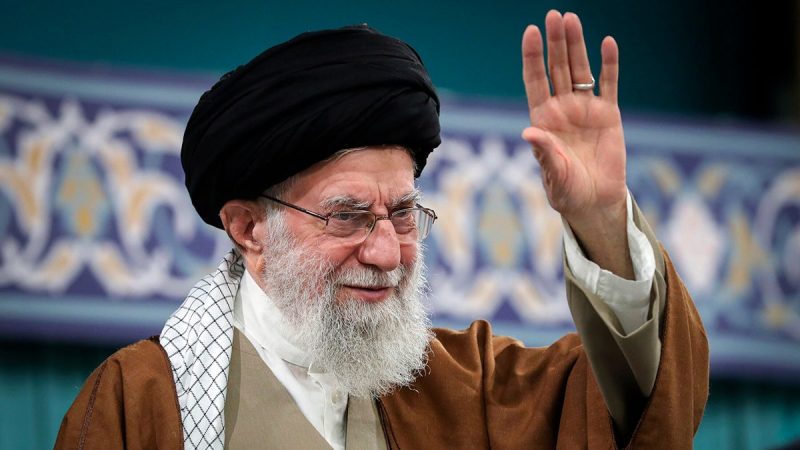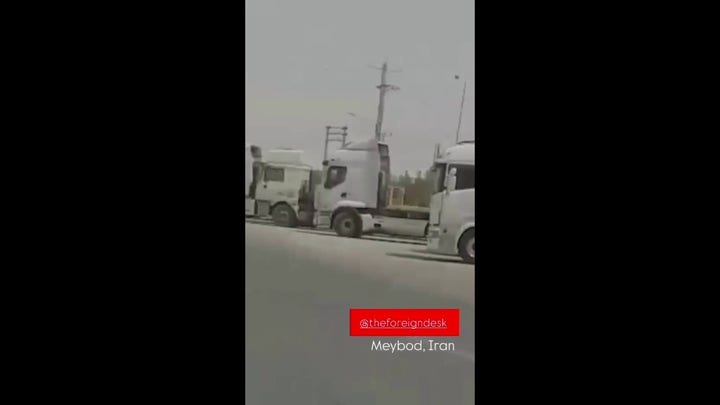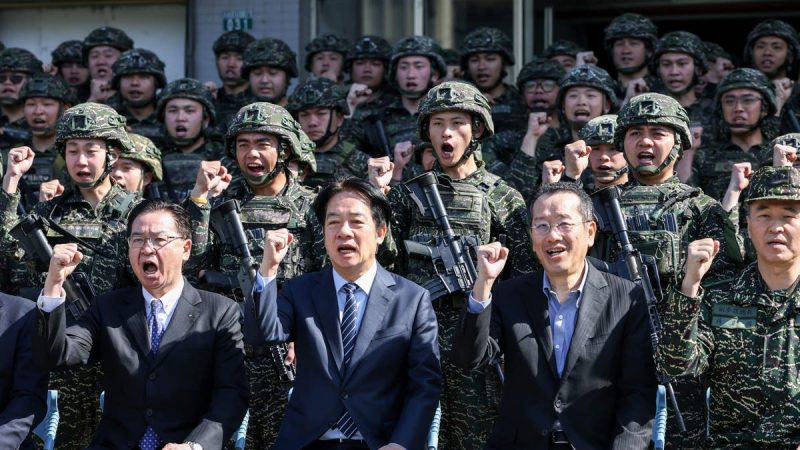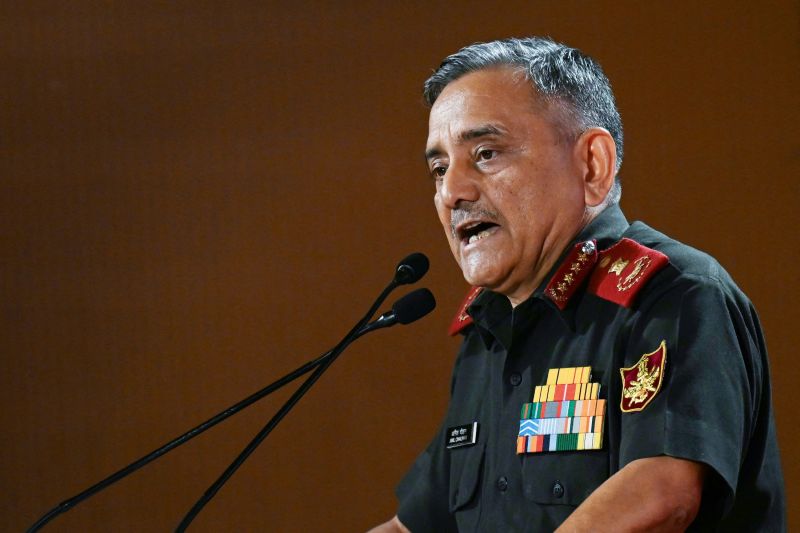
Jerusalem – Iran angrily lashed out at Austria’s government Friday after Fox News Digital reported on a document asserting that Tehran has developed an advanced nuclear weapons program that can launch long-range missiles.
The explosive report from Austria’s version of the FBI—the Directorate State Protection and Intelligence Service—provides a specialized window into the Iranian regime’s illicit atomic weapons program and its espionage activities in the central European country.
Fox News Digital was the first news organization to report on the Iran sections of the report on Wednesday, sparking a major diplomatic row between the Islamic Republic and Austria.
‘The Iranian nuclear weapons development program is well advanced, and Iran possesses a growing arsenal of ballistic missiles capable of delivering nuclear warheads over long distances,’ the Austrian domestic intelligence agency report stated.
Iran’s Foreign Ministry spokesperson, Esmail Baqaei, denounced the Austrian intelligence agency ‘for spreading lies,’ and called on the Austrian government to ‘provide an official explanation regarding the irresponsible, provocative, and destructive act by one of its official institutions,’ according to the Ministry’s website.
Tehran-based Austrian diplomat Michaela Pacher was summoned to the Iranian foreign ministry, according to the Austrian Federal Ministry for European and International Affairs.
‘[Pacher] took this opportunity to reiterate Austria’s and the EU’s position on the Iranian nuclear program,’ Austrian officials said in a statement. ‘This position was most recently expressed to the Board of Governors of the International Atomic Energy Agency.’
Austria expressed support for an EU statement along with other countries in March.
‘Iran already accumulated more than six significant quantities of 60% enriched material [which the Agency defines as the approximate amount of nuclear material for which the possibility of manufacturing a nuclear explosive device cannot be excluded] and is currently producing one significant quantity of highly enriched uranium every month,’ noted the EU statement.
The EU statement added that ‘All these actions carry very significant proliferation-related risks and raise grave concerns about Iran’s intentions, since they have no credible civilian justification. In this context, the EU remains concerned by statements made by Iranian officials about Iran’s capacity to assemble a nuclear weapon.’
The shocking Austrian intelligence findings contradict the assessment of U.S. intelligence agencies that Iran has yet to begin a weapons program, but has ‘undertaken activities that better position it to produce a nuclear device, if it chooses to do so.’ There have long been conflicting views (between U.S. intelligence agencies and European intelligence services) over Iran’s illegal nuclear weapons program.
The U.S. Office of the Director of National Intelligence declined to comment on the Austrian report.
‘President Trump is committed to Iran never obtaining a nuclear weapon or the capacity to build one,’ a White House official said.
The Austrian report coincides with a new International Atomic Energy Agency (IAEA) report. The AP reported on Saturday that Iran has further increased its stockpile of uranium enriched to near weapons-grade levels, a confidential report by the UN nuclear watchdog said Saturday and called on Tehran to urgently change course and comply with the agency’s probe.
The report comes at a sensitive time as Tehran and Washington have been holding several rounds of talks in the past weeks over a possible nuclear deal that U.S. President Donald Trump is trying to reach.
The report by the Vienna-based International Atomic Energy Agency says that as of May 17, Iran has amassed 408.6 kilograms (900.8 pounds) of uranium enriched up to 60%.
That material is a short, technical step away from weapons-grade levels of 90%. A report in February put the stockpile at 274.8 kilograms (605.8 pounds).
The IAEA report raised a stern warning, saying that Iran is now ‘the only non-nuclear-weapon state to produce such material’ — something the agency said was of ‘serious concern.’
In February, Fox News Digital reported that the IAEA said Iran has sufficient enriched uranium to manufacture six nuclear weapons.
‘The Islamic Republic is the standard-bearer of deception and stonewalling. Today’s damning IAEA reports confirm how Iran has been in violation of the NPT [Nuclear Non-Proliferation Treaty] for years, even when the JCPOA [Joint Comprehensive Plan of Action] was in effect. It shows the regime cannot be trusted with any diplomatic agreement,’ said Jason Brodsky, the policy director of United Against Nuclear Iran (UANI).
The JCPOA is the formal name for the Iran nuclear deal that was concluded between the Obama administration and Iran. President Trump withdrew from the JCPOA in 2018 because, his administration said at the time, the deal did not prevent Iran from building nuclear weapons.
‘I think Iran’s regime’s response to Austria’s findings shows its sensitivity over these matters,’ Brodsky said. ‘It also wants to bully Austria. Austria should force the Iranian regime to decrease the size of its embassy in Vienna which it has long used as a hub for malign intelligence collection and operations throughout Europe.’
The clerical regime’s foreign minister, Seyed Abbas Araghchi, posted on his X account a statement in response to the Fox News Digital report.
‘Media is speculating about an imminent Iran-U.S. deal. Not sure if we are there yet,’ he wrote. ‘Iran is sincere about a diplomatic solution that will serve the interests of all sides.
‘But getting there requires an agreement that will fully terminate all sanctions and uphold Iran’s nuclear rights—including enrichment. Path to a deal goes through the negotiating table and not the media.’
The U.S. talks to dismantle Iran’s illicit atomic weapons program coincides with a nationwide truckers’ strike in Iran. The widespread labor unrest could severely weaken the regime, according to Iran experts.
The exiled crown prince of Iran, Reza Pahlavi, who lives in the U.S, called on U.S. labor unions to stand with Iranian truckers.
‘Truck drivers and workers across Iran are on strike and are putting their lives on the line to fight for their rights and for a better future for their families,’ Pahlavi, who lives in the U.S, wrote on X. ‘Now, they are being jailed and threatened for posting photos and videos of their strike. Only in a free Iran will all workers have the right to freely and openly organize. I invite you, labor unions and leaders, to stand with your fellow workers in Iran and show your solidarity.’




















